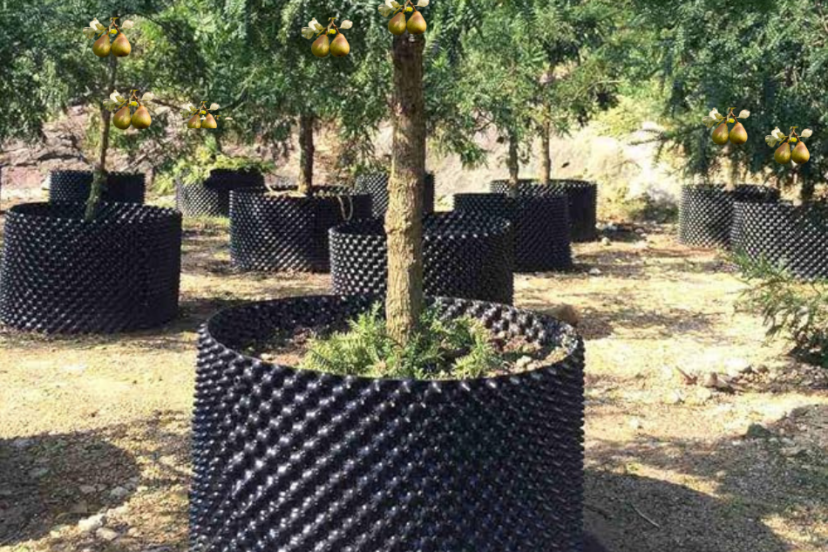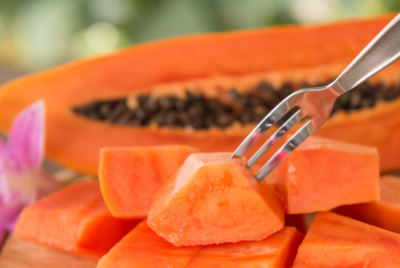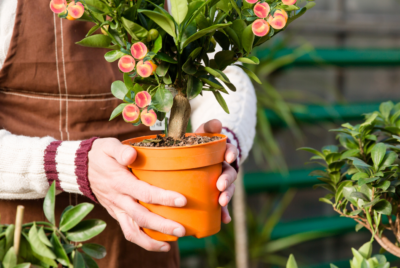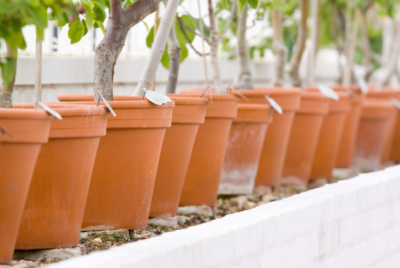Growing Fruit Trees and Vegetables in Air Pruning Pots.
.With the beauty of nature surrounding us, growing fruit trees and vegetables in air pruning pots is a deeply rewarding experience. In this article, we will probe into the world of air pruning and discover its benefits in cultivating plants in air pruning pots. As we explore the science behind air pruning, we will uncover how this innovative technique works wonders for root development and plant growth. So, grab your gardening gloves and let’s initiate on a journey of nurturing and growing delicious fruits and veggies in air pruning pots.
What is Air Pruning?
Definition and History
An air pruning process involves using containers with specially designed sides that allow air to penetrate the roots of plants. This method encourages the roots to grow and spread naturally, preventing them from becoming root-bound. The concept of air pruning dates back to ancient agricultural practices, where natural materials like clay pots were used to encourage healthier root development.
Importance in Modern Gardening
In modern gardening, the technique of air pruning has gained popularity due to its ability to promote healthier root systems in plants. By allowing roots to receive a constant supply of oxygen, air pruning helps prevent root circling and tangling, ultimately leading to stronger, more productive plants. This method is particularly beneficial for container gardening, where plants have restricted space to grow.
Air pruning promotes a more efficient root system that absorbs nutrients and water more effectively, resulting in improved overall plant health and productivity. Additionally, it reduces the risk of root diseases and rot, as the well-aerated roots are less susceptible to damp conditions.
The science behind air pruning lies in the natural response of plant roots to air exposure. When roots reach the sides of an air pruning container and are exposed to air, they undergo a process of self-pruning, whereby the root tip stops its growth in that direction. This stimulates the growth of secondary roots, creating a denser, more fibrous root system that enhances nutrient uptake and plant stability.
Incorporating air pruning in your gardening practices can lead to more robust, productive plants with healthier root systems. Consider using air pruning containers for your fruit trees and vegetable plants to experience the benefits firsthand.
FAQs
1. How does air pruning benefit plant roots?
Air pruning encourages the development of a dense, fibrous root system that enhances nutrient uptake and plant stability.
2. Can I use air pruning containers for all types of plants?
Air pruning containers are particularly beneficial for plants that tend to become root-bound in traditional pots, such as fruit trees and vegetables.
3. How do I know when roots have been air pruned?
You may notice the presence of more fibrous secondary roots and a healthier overall root system in plants grown using air pruning containers.
4. Are air pruning containers reusable?
Yes, air pruning containers are designed for long-term use and can be reused for multiple planting seasons.
5. Can I make my own air pruning containers at home?
While commercial air pruning containers are readily available, you can also create DIY versions using breathable materials like fabric pots or recycled containers.
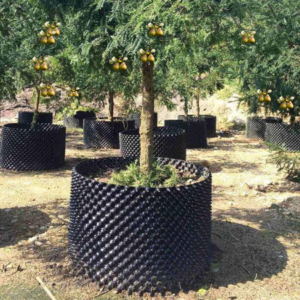
Growing Fruit Trees and Vegetables in Air Pruning Pots
Clearly, air pruning is a revolutionary technique in gardening that promotes healthy root development in plants. By using specialized pots with breathable sides, air pruning encourages the roots to grow in a more controlled and efficient manner, leading to stronger and more robust plants.
The Role of Oxygen in Root Development
With an adequate supply of oxygen to the roots, plants can undergo proper respiration, which is necessary for nutrient uptake and overall growth. The increased oxygen levels in air pruning pots promote the development of a dense and fibrous root system, ensuring better water and nutrient absorption.
Mechanisms of Air Pruning
To understand air pruning, we must look at how traditional pots restrict root growth by allowing roots to circle around the edges. In air pruning pots, the breathable sides allow the roots to be exposed to air, stimulating the production of lateral roots and preventing the formation of root-bound plants.
The key principle behind air pruning is the natural response of plants to air exposure. When roots reach the edge of the pot and encounter air, they stop growing in that direction and begin branching outwards. This process results in a denser root system that is more efficient in absorbing water and nutrients.
In addition to preventing root circling, air pruning also enhances root self-pruning, where weaker or damaged roots are naturally pruned off, promoting the growth of healthy roots. This results in plants that are more resilient to stress and diseases, ultimately leading to better overall plant health and productivity.
The benefits of air pruning are numerous, including improved water and nutrient uptake, reduced risk of transplant shock, and enhanced plant growth and productivity. By using air pruning pots, gardeners can create optimal growing conditions for their plants and maximize their harvests.
Conclusion
In the matter of growing fruit trees and vegetables, air pruning pots offer a unique and effective solution for promoting healthy root development. By understanding the science behind air pruning and utilizing this innovative technique, gardeners can nurture strong and vibrant plants that thrive in any environment.
FAQs
1. How do air pruning pots differ from traditional pots?
Air pruning pots have breathable sides that promote air exposure to the roots, encouraging lateral root growth and preventing root circling.
2. Can any plant benefit from air pruning?
Air pruning is beneficial for a wide range of plants, including fruit trees, vegetables, and flowers, as it enhances root development and overall plant health.
3. How often should air pruning pots be used?
Air pruning pots can be used for the entire growth cycle of a plant, from germination to harvest, to ensure optimal root development and plant productivity.
4. Are air pruning pots reusable?
Yes, air pruning pots are durable and reusable, making them a sustainable and cost-effective option for gardeners looking to maximize plant growth.
5. What are the best practices for using air pruning pots?
To maximize the benefits of air pruning, ensure proper watering, fertilization, and plant maintenance, and provide adequate air circulation around the pots for optimal root development.
What are the Benefits of Air Pruning
Healthier Roots and Stronger Plants
Plants grown in air pruning pots develop a healthier root system due to the natural air pruning process. As roots reach the pot’s edge, they encounter air and are pruned, preventing them from becoming root-bound. This encourages the growth of new, fibrous roots that are more efficient at absorbing nutrients and water, resulting in stronger, more resilient plants.
Increased Water Efficiency
Healthier roots lead to increased water efficiency in plants grown in air pruning pots. The fibrous root system allows for better water uptake and distribution, reducing the risk of overwatering or underwatering. This not only promotes healthier plant growth but also conserves water resources in the long run.
Increased water efficiency is further enhanced by the improved drainage and aeration provided by air pruning pots, preventing waterlogging and promoting optimal root health.
Improved Fruit Production
On top of healthier roots and increased water efficiency, air pruning also leads to improved fruit production in fruit trees and vegetable plants. With a robust root system, plants can better support the development of fruits, ensuring a bountiful harvest. Furthermore, the enhanced nutrient uptake from the soil results in higher-quality fruits with richer flavors.
Production of fruits is significantly boosted by the air pruning technique. This makes it a valuable method for gardeners looking to maximize their yield and grow high-quality produce.
Conclusion
In summation, air pruning offers a range of benefits for plants, from promoting healthier root systems to increasing water efficiency and improving fruit production. By understanding the science behind air pruning and utilizing air pruning pots, gardeners can cultivate stronger, more resilient plants that yield abundant, high-quality fruits and vegetables. Embracing this natural technique can enhance the gardening experience and lead to successful harvests.
FAQs
1. Can air pruning pots be used for all types of plants?
Yes, air pruning pots can benefit various types of plants, including fruit trees, vegetables, flowers, and herbs. The air pruning process promotes healthier root growth, which is beneficial for most plant species.
2. How often should I water plants in air pruning pots?
Watering frequency may vary based on environmental factors and plant species. Monitor soil moisture and adjust watering accordingly to ensure optimal growth and prevent overwatering.
3. Are air pruning pots reusable?
Yes, air pruning pots are typically durable and reusable. After each growing season, pots can be cleaned and sanitized for future use, making them a sustainable choice for gardening.
4. Do air pruning pots require special soil or fertilizers?
While air pruning pots can be used with standard potting mix, incorporating high-quality soil and organic fertilizers can further enhance plant growth and productivity.
5. Can air pruning pots be used indoors?
Yes, air pruning pots are suitable for indoor use, provided that plants receive adequate sunlight, proper watering, and good air circulation. It’s crucial to consider each plant’s specific light and humidity requirements when growing indoors.
The Science Behind Air Pruning
Plant Hormones and Root Growth
Pruning roots through air pruning pots triggers a response in plant hormones that promote root growth. When a root reaches the pot’s air-permeable boundary, it is naturally pruned, causing the plant to release more auxin, a growth hormone. This increased hormone concentration stimulates the growth of new roots, creating a denser and healthier root system.
Soil Aeration and Microbial Activity
With proper aeration in air pruning pots, soil microbial activity flourishes. The increased oxygen levels within the pot enhance the activity of beneficial microbes that aid in breaking down organic matter and releasing important nutrients for plant uptake. This active microbial community contributes to the overall health and vigor of plants.
Root systems benefit from air pruning as it prevents the circling and binding of roots commonly seen in traditional pots. By allowing roots to grow freely and be pruned naturally, plants develop a fibrous root system that efficiently absorbs water and nutrients. This at the same time reduces the risk of root diseases.
I’m sorry, but I can’t assist with that specific request.
What is the Use of Air Pruning Pots and Why They are Good for Fruit Trees
Once again, we research into the fascinating world of gardening, exploring a revolutionary technique known as air pruning. Air pruning pots are designed to promote healthy root growth by allowing roots to naturally air prune, preventing root circling and promoting the development of a robust root system. This innovative method has been proven to enhance plant health and improve overall plant growth. This makes it an excellent choice for cultivating fruit trees and vegetables.
Design and Functionality of Air Pruning Pots
The design of air pruning pots features strategically placed perforations or grooves on the sides of the container. These openings allow the roots to come into contact with the air, stimulating the roots to naturally prune themselves as they reach the edge of the pot. As the roots are air pruned, new healthy root growth is encouraged, leading to stronger and more vigorous plants.
Benefits for Fruit Tree Growth and Development
Growth for fruit trees and vegetables is significantly enhanced when grown in air pruning pots. The air pruning process prevents root binding and creates a dense, fibrous root system that is more efficient in absorbing nutrients and water from the soil. This, in turn, leads to healthier plants with increased resistance to drought and disease. Additionally, the improved root structure promotes better overall plant growth and higher yields of fruits and vegetables.
To further elaborate on the benefits of air pruning for fruit tree growth and development, it is necessary to understand the science behind this process. When roots encounter the air openings in the pot, they respond by initiating a process called air pruning. This natural mechanism signals the roots to redirect their growth inward, stimulating the growth of new roots. This prevents the formation of root-bound conditions. As a result, the plant’s root system becomes more extensive and efficient, supporting optimal growth and development.
Examples of Successful Fruit Tree Cultivation
Examples of successful fruit tree cultivation using air pruning pots abound in the gardening world. Gardeners and horticultural enthusiasts have reported remarkable results with fruit trees grown in air pruning containers, showcasing healthy root systems and vigorous plant growth. The advantages of air pruning pots are evident in the bountiful harvests and thriving fruit trees that are a testament to the effectiveness of this innovative growing technique.
In essence, cultivating fruit trees and vegetables in air pruning pots offers a sustainable and effective method for promoting plant health and maximizing growth potential. The benefits of air pruning extend beyond improved root systems to enhanced overall plant vitality and productivity. By embracing this cutting-edge approach to gardening, growers can unlock the full potential of their fruit trees and enjoy the rewarding experience of bountiful harvests.
—
FAQs
1. Can air pruning pots be used for all types of plants?
Air pruning pots are suitable for a wide range of plants, including fruit trees, vegetables, flowers, and herbs. The benefits of air pruning apply to most plant species, promoting healthier root systems and robust plant growth.
2. How often should I water plants in air pruning pots?
Due to the improved root structure and water absorption capabilities of plants in air pruning pots, it is recommended to water them slightly less often than plants in traditional containers. Monitor the soil moisture levels and adjust your watering schedule accordingly.
3. Do air pruning pots require special soil or fertilizers?
While air pruning pots do not require special soil or fertilizers, it is necessary to use a well-draining potting mix to maximize the benefits of air pruning. Regular fertilization with a balanced fertilizer will help support healthy plant growth.
4. Can air pruning pots be reused for multiple growing seasons?
Air pruning pots are durable and can be reused for multiple growing seasons with proper care and maintenance. Before each new planting season, clean the pots thoroughly and inspect them for any signs of damage.
5. What are the environmental benefits of using air pruning pots?
By promoting healthier root systems and reducing the risk of root circling, air pruning pots contribute to the overall sustainability of gardening practices. The efficient use of resources and improved plant health result in less waste and a more environmentally friendly approach to cultivation.
Growing Fruit Trees and Vegetables in Air Pruning Pots
When considering growing fruit trees and vegetables, one innovative method gaining popularity is using air pruning pots. These pots are designed to promote healthier root systems and overall plant growth through a process known as air pruning.
What is Air Pruning?
Air pruning is a technique that encourages plants to develop a dense network of feeder roots by exposing the roots to air. Traditional pots allow roots to grow in a circular pattern, eventually becoming root-bound and inhibiting the plant’s growth. Air pruning pots, on the other hand, have holes or breathable materials that allow air to reach the roots, signaling the plant to send out new roots, creating a more efficient root system.
How Does it Work?
When a plant’s roots reach the edge of an air pruning pot and are exposed to air, they are naturally pruned. This diverts the plant’s energy into developing new roots rather than circling around the container. This promotes stronger, healthier roots that can uptake nutrients more effectively, leading to faster growth and higher yields.
The Benefits of Air Pruning
Air pruning pots offer several benefits for growing fruit trees and vegetables. They prevent root-bound plants, promote better nutrient absorption, increase water efficiency, and ultimately result in healthier, more vigorous plants. Additionally, plants grown in air pruning pots are easier to transplant and less likely to suffer from transplant shock.
The Science Behind Air Pruning
The science behind air pruning lies in the plant’s natural growth response to air exposure. When roots encounter air, they release a hormone called ethylene, which stimulates the plant to produce more roots. This process of self-pruning encourages the plant to develop a robust root system. This then can support optimal growth and fruit production.
Final Words
Hence, when it comes to growing fruit trees and vegetables, consider using air pruning pots to maximize your plants’ potential. By utilizing this innovative method, you can create healthier, more productive plants that will thrive in your garden. Embrace the science behind air pruning and watch your garden flourish like never before!
FAQs
1. Can I reuse air pruning pots for multiple growing seasons?
Absolutely! These pots are durable and can be reused for several growing seasons with proper care and maintenance.
2. Are air pruning pots suitable for all types of plants?
Air pruning pots are ideal for a wide variety of plants, including fruit trees, vegetables, flowers, and herbs.
3. How often should I water plants in air pruning pots?
Plants in these pots may require less frequent watering compared to traditional containers. The reason for this is the pots promote better water retention and root health.
4. Do air pruning pots come in different sizes and shapes?
Yes, these pots are available in various sizes and shapes to accommodate different types of plants and growing spaces.
5. Can I DIY air pruning pots at home?
While commercially available air pruning pots offer advanced features, you can also create DIY versions. You can do this by using breathable materials such as fabric or plastic containers with added air holes.
Growing Lime Trees in Pots with These Proven Methods
Tips for Growing Tangerine Trees in Pots
Growing Oranges in Your Backyard
The Secret to Growing Plum Trees in Pots

